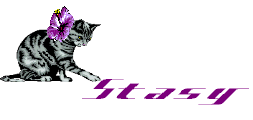


BROEKHUIS, KELLER & SCHÖNWÄLDER Repelen: the Last Tango (CD on Manikin Records)
This release from 2014 features 74 minutes of gentle electronic music recorded during concerts at Repelen in Germany from 2011 through 2013.
Joining Bas Broekhuis, Detlef Keller and Mario Schönwälder are: Raughi Ebert (on guitar) and Thomas Kagermann (on violin).
Luxurious electronic passages are embellished by rhythms and strings, resulting in very engaging tunes.
The electronics make profuse use of tones that get elongated into fluid background layers. Other threads comprise keyboard sequences that are then looped and subjected to slow variation over extended periods.
Throughout this music, several isolated riffs are pursued by different keyboards. These divergent threads gently mesh, creating fresh melodies that transmute as things continue.
While rhythms are present, the beats are often generated through the cyclic application of non-impact electronics, so that the tempos seem to emerge from the intertwining keyboard threads. There are, however, some instances where e-perc provides more conventional rhythms.
The guitar indulges in some gentle acoustic expressions that fit nicely with the undulant electronic flow. At other times, electric guitar contributes striking chords that season the flow with their strident notes.
The violin supplies a slippery drone that exudes smoothness and sultry overtones. It's as if carefully crafted squeaks had been stretched to become mournful tones, then the "mourn" had been replaced with a sensuous lilt.
These compositions explore slow-burn structures, progressing from sparse beginnings to lush tunes through the gradual introduction of instruments which establish riffs that eventually vary as things continue, all the while the tunes grow increasingly lush, radiating a type of passion that softly smolders instead of openly exploding. This relaxed intensity is quite bewitching.

FANGER & SCHÖNWÄLDER Analog Overdose 5 (CD on Manikin Records)
This release from 2014 features 77 minutes of compelling electronic music.
Fanger and Schönwälder are joined by talented guitarist Lutz Graf-Ulbrich (from Ashra).
An array of bouncy electronics are employed to craft spry tuneage. Choppy keyboard patterns are looped, while additional electronic chords embellish the flow. Fluid chords are stretched into sinuous background threads. Fresh riffs lend depth and regal character to the flow. Deeply resonant pulsations spill forth, accompanied by snarling astral guitarwork.
Agile guitar provides some haunting passages. The notes glisten with a molten quality. In one song, the guitar adopts a clangy funk motif to accompany a series of chugging electronics; here, the guitar undergoes some dazzling chameleon changes, mimicking different styles and rock genres.
While rhythms are vital to this music, the percussion is artificial, allowing the tempos to aspire to an uncommon crispness. On a few occasions, these beats achieve a degree of dazzling authority.
These compositions are lively and rich with enticing melodies. Some are even quite memorable and compelling.
The album ends with a 22 minute track that was recorded during a live session in a car driving through Berlin. A delightful blend of twangy guitar, animated keys and peppy rhythms achieves a mesmerizing pastiche that is quite riveting. Bubbling electronics step up the complexity, followed by synth strings that sway a full 180 degrees as they enhance the flow. A passage sprinkled with limber guitar sustains guides the tune into an entertaining diversion before things return to their bouncy disposition and ultimately slide into a smooth deceleration for the conclusion (which in itself is peppered with inventive embellishments).

VARIOUS ARTISTS Pure Relaxation (CD on Manikin Records)
This release from 2014 features 75 minutes of chill out electronic music.
Here, you have three long pieces: one by Detlef Keller, one by Mario Schönwälder, and one by Thomas FangerŅall designed to induce relaxation with chill-out sentiments.
Keller's song opens with sweet chiming chords running in tandem with crisp keyboards. Additional key threads overlay this flow, creating a sonic tapestry of entrancing definition. As the music progresses, these threads loop, generating a pleasant sequence that stretches on for a while. All the while, the threads are evolving, pursuing variations that lazily drift on a central undulant textural. A piano emerges as the lead thread for a passage of endearing tenderness. While the riffs are somewhat nimble, the overall mood remains mellow and easygoing. A variety of embellishments are encountered along the way, some vibrant with chorales, others sultry with dreamy keyboard chords. The conclusion adopts a sparse representation of the melody.
Schönwälder's track begins with sighing tonal waves that lead to sparse electronic pulsations that gradually coalesce into a slippery keyboard riff. Eventually, other riffs join the flow, lending a soft drama to the ambience. A striking keyboard presence creeps in, seasoning things with a stately posture. Snatches of trickling water come and go, while that background textural continues its steady, languid waxing and waning. And speaking of those background textures, they've secretly evolved, gaining a deeper resonance that exhibits a tasty pronounced tremble. It's this matured textural wash that leads the listener to the end.
Bells and random percussives characterize the commencement of Fanger's piece. Piano contributes a melodic thread that slowly coalesces from hesitant notes into more fluid keyboard chords. The percussion adopts a rhythm that gradually grows more intricate, but remains low-key. Meanwhile, the interplay between the keys has taken on a sparkling animation. Hints of more majestic electronics enter the mix. A hypnotic formation is ultimately generated, lush yet languid, spry but smooth. The chimes and bells return for the finale.
Each composition is highly calming, but far more melodic than usual ambient recordings.

| Entire page © 2014 Matt Howarth. All rights reserved. |
Webpage design by
 |